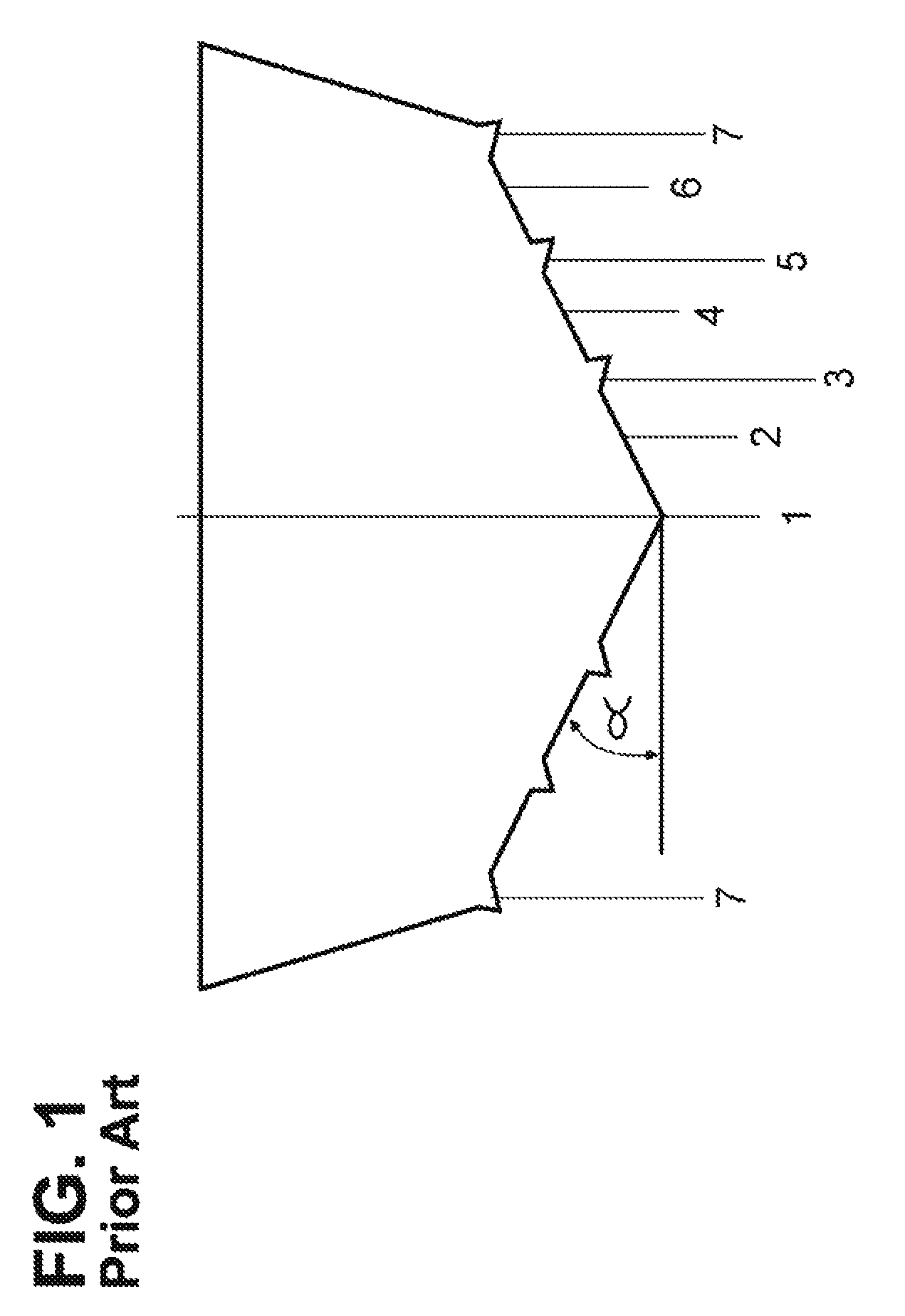Planing hull for rough seas
a rough sea and planing technology, applied in the field of watercraft hulls, can solve the problems of poor seakeeping, lack of seakindliness and directional stability, and watercraft with exclusively flat planing surfaces cannot achieve high seakeeping and seakindliness, so as to improve seakeeping and seakindliness
- Summary
- Abstract
- Description
- Claims
- Application Information
AI Technical Summary
Benefits of technology
Problems solved by technology
Method used
Image
Examples
Embodiment Construction
[0063]Referring now to the drawings in detail, FIG. 1 shows the transverse cross-section, at the transom, of a conventional deep-V hull. The hull has a V shaped bottom, including a conventional narrow keel 1, a plurality of (in this case three) pairs of flat panels 2, 4, and 6, separated by longitudinal strakes 3 and 5, and flat chines 7. The strakes are typically narrow wedge shaped elements with reverse deadrise primarily intended to separate water spray from the hull. The deadrise angle α for all the flat panels 2, 4 and 6 of the hull at the aft end or transom 8 is generally between 20 and 30 degrees. Typically, such hull panels increase in deadrise moving forward to a deadrise of about 43 degrees or slightly higher to provide a bow entry to slice through waves rather than slamming into them. The hull also includes a conventional curved bow 9 (see FIG. 2a), a forebody section, and a forefoot.
[0064]As noted above, contemporary deep V hulls possess relatively good seakeeping charac...
PUM
 Login to View More
Login to View More Abstract
Description
Claims
Application Information
 Login to View More
Login to View More - R&D
- Intellectual Property
- Life Sciences
- Materials
- Tech Scout
- Unparalleled Data Quality
- Higher Quality Content
- 60% Fewer Hallucinations
Browse by: Latest US Patents, China's latest patents, Technical Efficacy Thesaurus, Application Domain, Technology Topic, Popular Technical Reports.
© 2025 PatSnap. All rights reserved.Legal|Privacy policy|Modern Slavery Act Transparency Statement|Sitemap|About US| Contact US: help@patsnap.com



